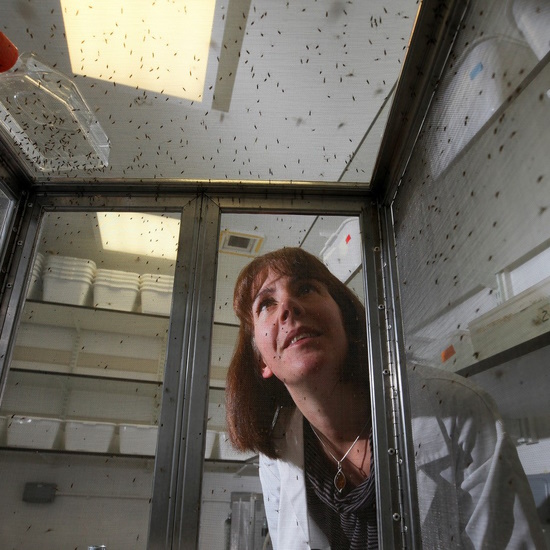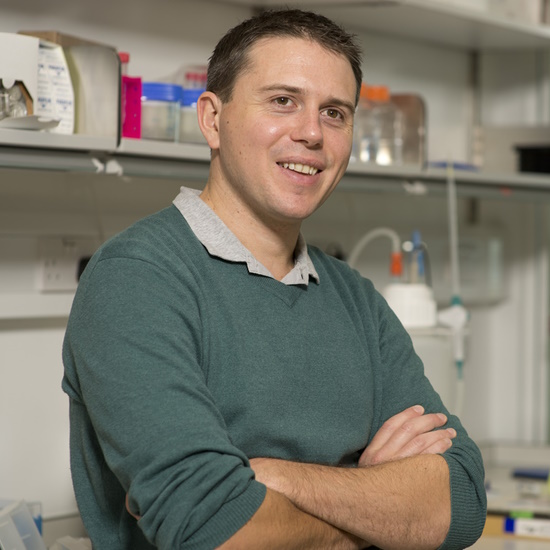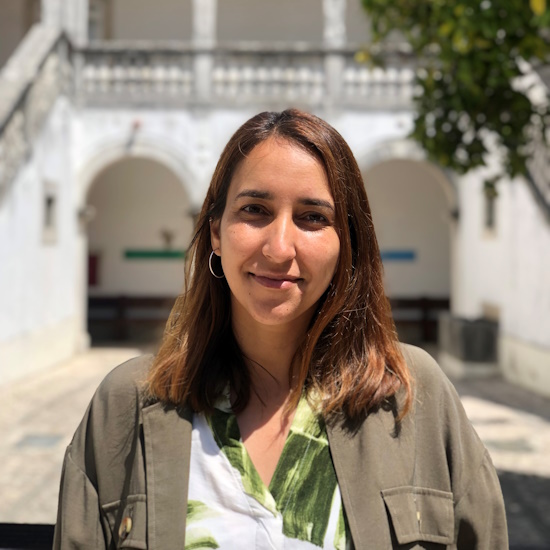Time to start taking time seriously: circadian rhythms in infection and immunity

Theo Murphy meeting organised by Professor Sarah Reece, Dr Rachel Edgar and Professor Annie Curtis.
The time of day when infection occurs can dictate live-or-die outcomes for hosts, but how timing impacts host-pathogen interactions remains largely unknown. Leaders in the fields of circadian biology, immunology, microbiology, parasitology, virology and evolutionary ecology explored how and why rhythms in pathogen activities and host immune responses drive disease processes, ultimately determining the severity and transmission of infections.
The schedule of talks and speaker biographies is available below. Speaker abstracts are also available below.
Attending this event
This event has taken place.
To view the programme, please scroll down and select the day on the left-hand side. Click the arrows to view the speakers and talks.
Enquiries: contact the Scientific Programmes team.
Organisers
Schedule
Chair

Dr Tyler Stevenson, University of Glasgow, UK

Dr Tyler Stevenson, University of Glasgow, UK
Tyler Stevenson is Head of Physiology, Ageing and Welfare and Group Leader of the Laboratory for Seasonal Biology in the School of Biodiversity, One Health and Veterinary Medicine at the University of Glasgow. The laboratory has received generous funding from the Leverhulme Trust, Wellcome Trust and BBSRC to study the mechanism and evolution of seasonal time. He is the author of On Rheostasis: the hierarchical organization of physiological stability published by Oxford University Press.
| 09:00-09:15 |
Welcome

Professor Sarah Reece, University of Edinburgh, UK

Professor Sarah Reece, University of Edinburgh, UKSarah works at the interface of infectious disease and evolutionary ecology. Sarah completed her PhD in 2003 having researched the reproductive strategies of sea turtles, parasitoid wasps, and malaria parasites. After a short-term lecturing position, Sarah won a fellowship from the Natural Environment Research Council UK to set up her lab at the University of Edinburgh. Next, Sarah secured a Wellcome Trust Career Development fellowship, followed by a Royal Society University Research Fellowship. Sarah is also a Wellcome Trust Investigator and became Chair of Evolutionary Parasitology in 2014, and is co-director of the Women in Malaria, Scottish Parasitology Partnership in Research, Innovation, and Training, and Edinburgh Infectious Diseases networks. She has authored over 100 papers and been awarded several prizes including a L'Oréal-UNESCO fellowship for women in science, the Zoological Society London Scientific Medal, fellowship of the Royal Society of Edinburgh, and the British Society for Parasitology’s Wright Medal. Sarah has two children and works part time. Research in the Reece lab takes a highly interdisciplinary approach to investigating what makes a successful parasite, and the evolutionary limits on their success. These strategies underpin the severity of infections and the transmission of disease and are best understood through the lenses of parasitology, chronobiology, and evolutionary ecology with occasional dabbling in biophysics, population genetics, and theoretical models. The Reece lab is also committed to public engagement and have developed a diverse program of activities for primary school children. 
Dr Rachel Edgar, Imperial College London, UK

Dr Rachel Edgar, Imperial College London, UKDr Rachel Edgar completed their PhD in 2012 at the University of Cambridge, investigating the kinetics of viral transmission between cells, then pursued their interest in circadian biology as a post-doctoral researcher at the University of Cambridge Institute of Metabolic Science and the MRC Laboratory of Molecular Biology. In 2018, Dr Edgar was awarded a Royal Society-Wellcome Trust Sir Henry Dale Fellowship and established a research group at Imperial College London. Their research focuses on the intersection of biological timing, cellular homeostasis and infectious disease, investigating how changes in baseline cell-intrinsic immunity, proteostasis, osmotic and metabolic state influence virus replication and the establishment of infection. They also develop translational applications of this research to combat viral infections and prevent transmission. |
|---|---|
| 09:15-09:45 |
Introduction to session 1 and session 2

Dr Rachel Edgar, Imperial College London, UK

Dr Rachel Edgar, Imperial College London, UKDr Rachel Edgar completed their PhD in 2012 at the University of Cambridge, investigating the kinetics of viral transmission between cells, then pursued their interest in circadian biology as a post-doctoral researcher at the University of Cambridge Institute of Metabolic Science and the MRC Laboratory of Molecular Biology. In 2018, Dr Edgar was awarded a Royal Society-Wellcome Trust Sir Henry Dale Fellowship and established a research group at Imperial College London. Their research focuses on the intersection of biological timing, cellular homeostasis and infectious disease, investigating how changes in baseline cell-intrinsic immunity, proteostasis, osmotic and metabolic state influence virus replication and the establishment of infection. They also develop translational applications of this research to combat viral infections and prevent transmission. |
| 09:45-10:15 |
Fundamentals: language of oscillators
Drawing on diverse examples, this talk will cover core concepts of biological rhythms and their measurement. The evidence supporting various models for circadian rhythm generation will be presented. 
Dr John O'Neill, MRC Laboratory of Molecular Biology, UK

Dr John O'Neill, MRC Laboratory of Molecular Biology, UKJohn studied Biochemistry at New College, Oxford, then did his PhD research on cAMP signalling and the mammalian circadian pacemaker at the MRC Laboratory of Molecular Biology in Cambridge with Michael Hastings. As a post-doc, he investigated circadian rhythms in plants and algae with Andrew Millar in Edinburgh, and then in human cells then at the Institute of Metabolic Science in Cambridge with Ak Reddy. John was awarded a Wellcome Trust Career Development Fellowship in 2011, then in 2013 was recruited to become a group leader in the Cell Biology Division of the LMB. The O’Neill group is interested in the fundamental mechanisms that sustain circadian rhythms in eukaryotic cells, how this endogenous clock evolved, and how daily timekeeping organises mammalian cell function to deal with the different challenges of day and night. |
| 10:15-10:45 |
Fundamentals: ecology of oscillators
In this presentation Professor Hut will address the functional ecology of oscillators: how do rhythms help organisms to increase fitness. He will discuss natural circadian entrainment, but also highlight the importance of flexibility in the expression of circadian rhythms (circadian vs ultradian) and the impact of flexible phase angle of entrainment on energetics at the organismal level. Such adequate acute stress responses are essential for survival under natural conditions. However chronic stress conditions may lead to mal-adaptive responses and circadian mis-alignment of internal rhythms in organs and tissues, which may lead to health problems. 
Professor Roelof Hut, University of Groningen, The Netherlands

Professor Roelof Hut, University of Groningen, The NetherlandsRoelof Hut is professor of Chronobiology at the University of Groningen, the Netherlands. His PhD supervisor was Serge Daan and his postdoc advisors were Howard Cooper (INSERM in Lyon) and Mike Menaker (University of Virginia). His scientific interest is in evolutionary, ecological and neurobiological aspects of biological rhythms in mammals, but also in insects, birds and humans. Relationships between metabolism and latitudinal adaptation with mechanisms of seasonal timing and flexibility in circadian timing are central themes in his work. His broad research interest in all aspects of chronobiology illustrates the width and diversity in the field of chronobiology biology. |
| 10:45-11:15 |
Break
|
| 11:15-11:45 |
Fundamentals: molecular operation of oscillators
Circadian rhythms persist across kingdoms and all levels of biological scale. At their most fundamental level, however, circadian rhythms occur at the level of the single cell and are driven by sub-cellular molecular processes, most particularly the circadian Transcriptional-Translational Feedback Loop (TTFL). Dr Crosby will introduce the primary features of this core timekeeping circuit, with particular emphasis on how this system manifests in mammals. Additionally, she will present some of the major tools used to study molecular circadian rhythms in cells and how we can use these to understand both how cellular rhythms are maintained and how cellular rhythms are influenced by specific extracellular events. Finally, she will use examples from recent work looking at the core mammalian circadian transcriptional activator, CLOCK:BMAL1, to highlight the substantial insights that can be obtained by combining cell biology techniques with molecular biophysics and structural biology. By developing a deeper mechanistic understanding of how cellular 'clocks' function at the molecular level, the group hopes to capitalise on the temporal regulation of physiology to develop new and innovative strategies to treat the broad spectrum of diseases that are associated with disruption of these fundamental cellular timekeeping systems. 
Dr Priya Crosby, University of California Santa Cruz, USA

Dr Priya Crosby, University of California Santa Cruz, USAPriya carried out her undergraduate degree at St Catharine's College, Cambridge and then moved to the MRC Laboratory of Molecular Biology where, under the supervision of John O'Neill, she undertook her PhD investigating the role of cellular metabolism in regulating circadian timekeeping. Currently, Priya works in the lab of Carrie Partch at the University of California, Santa Cruz, where she predominantly investigates the structure and function of proteins that regulate cellular circadian rhythmicity. |
| 11:45-12:15 |
Intersection of clocks, behaviours and physiological rhythms
The mammalian circadian timing system evolved to drive circadian rhythm in behaviour and physiology that anticipate regular, recurring events in the environment. A hypothalamic clock is synchronised to the external light-dark cycle and drives timing of behaviours such as the sleep-wake cycle and feeding timing. Alongside this, clocks in almost every nucleated cell of the body are synchronised to non-photic timing signals and drive tissue-specific rhythms in physiology through (post)transcriptional regulation. In turn, these behaviours and physiological rhythms themselves also act as non-photic synchronisers and as such feedback to circadian clocks, resulting in a reverberating landscape of rhythms that align dependant biological processes in time, or segregate incompatible processes. When behaviours such as sleeping and eating are mistimed, this invokes desynchrony in this reverberating landscape, which is associated with downstream health issues including metabolic disorders, cancers and disturbed immune function which bring major social, economic and personal costs. Of interest here is how the immune system sits within the circadian landscape, and particularly what timing information infecting agents may present to the host circadian timing system. Recent mouse studies show that when the donor of malaria parasites is on a different time zone than the host, this affects parasite replication and host circadian rhythms. This suggests that the parasite conveys a timing signal that disrupts the host timing system, and Dr van der Veen will present new data showing that infection with mismatched parasites leads to circadian desynchrony in the host transcriptome which is reminiscent of desynchrony caused by mistimed sleeping or eating. 
Dr Daan R van der Veen, University of Surrey, UK

Dr Daan R van der Veen, University of Surrey, UKDaan is a Senior Lecturer in Sleep and Chronobiology at the University of Surrey. Daan received his PhD at the University of Groningen (the Netherlands) based on his work on the impact of circadian and ultradian feeding patterns on clocks in peripheral tissues. After his PhD, Daan continued his Chronobiology and Sleep research as a postdoc at the University of Surrey (UK) and University of Notre Dame (USA) working on the behavioural genetics of sleep and circadian rhythms. He joined the University of Surrey Faculty in 2012, and his current research focusses on co-expression of circadian and ultradian rhythms in behaviour and metabolism, and the role of peripheral clocks in orchestrating these rhythms. |
| 12:15-13:00 |
Discussion: integration across scales of biological organisation

Dr Tyler Stevenson, University of Glasgow, UK

Dr Tyler Stevenson, University of Glasgow, UKTyler Stevenson is Head of Physiology, Ageing and Welfare and Group Leader of the Laboratory for Seasonal Biology in the School of Biodiversity, One Health and Veterinary Medicine at the University of Glasgow. The laboratory has received generous funding from the Leverhulme Trust, Wellcome Trust and BBSRC to study the mechanism and evolution of seasonal time. He is the author of On Rheostasis: the hierarchical organization of physiological stability published by Oxford University Press. |
Chair

Dr Laura Roden, Coventry University, UK

Dr Laura Roden, Coventry University, UK
Laura obtained her PhD in Plant Sciences from the University of Cambridge and completed post-doctoral research at the Universities of Arizona and Warwick, and Broom's Barn Research Station before establishing her own lab at the University of Cape Town. She is now an academic at Coventry University and holds an honorary post in the Department of Human Biology at the University of Cape Town. Laura’s research interests are in the molecular aspects of biological timekeeping in plant and human systems.
| 14:00-14:30 |
Circadian anti-tumour immune responses
The immune system acts in a circadian manner. In this talk, Professor Scheiermann will focus on the anti-tumour immune response and discuss how these underlying oscillations can be targeted by chrono-immunotherapy. 
Professor Christoph Scheiermann, University of Geneva, Switzerland

Professor Christoph Scheiermann, University of Geneva, SwitzerlandChristoph Scheiermann studied biochemistry at the Freie University (FU) Berlin, Germany. He received his PhD in vascular biology with Sussan Nourshargh from Imperial College London, UK, before joining the laboratory of the late Paul S Frenette at Mount Sinai School of Medicine and later the Albert Einstein College of Medicine in New York City, USA, for postdoctoral work. He is the recipient of an Emmy-Noether award from the Deutsche Forschungsgemeinschaft (DFG) and a Starting and Consolidator grant from the European Research Council (ERC). He is currently associate professor at the University of Geneva, Switzerland, with an additional lab and affiliation at the Ludwig-Maximilians-University (LMU) in Munich, Germany. His research interests focus on the circadian and neural control of immune functions. |
|---|---|
| 14:30-15:00 |
Sleep and immunity
The circadian system and sleep are closely intertwined. However, when investigating 24-hour rhythms in the immune system, the role of sleep is often neglected. In this talk, Professor Besedovsky will provide a general introduction to the interactions between sleep and the immune system, with a specific focus on the effects of sleep on peripheral immune functions in humans. Sleep has potent effects on adaptive immune responses and inflammatory homeostasis. The underlying mechanisms as well as potential consequences of the effects of sleep on the immune system for a variety of diseases, including neurodegenerative, metabolic, and cardiovascular diseases, will be outlined. They will also give examples of 24-hour immune rhythms that are largely independent of sleep as well as of such that are predominantly driven by the sleep-wake cycle and are, thus, not truly circadian (ie not directly driven by the circadian clock). With this talk, Professor Besedovsky hopes to provide a bridge between circadian clock and sleep research in the context of immunity and to make a case for the importance of considering effects of both the circadian system as well as of sleep when investigating 24-hour rhythms in the immune system. Professor Luciana Besedovsky, Ludwig-Maximilians-Universität München, Germany
Professor Luciana Besedovsky, Ludwig-Maximilians-Universität München, GermanyLuciana Besedovsky studied psychology at the Universities of Göttingen and Düsseldorf, Germany, with a focus on biological psychology and pharmacology as a subsidiary subject. She finished her PhD at the University of Tübingen, Germany, under the supervision of Professor Dr Jan Born. From 2017 – 2018, she was a postdoctoral research fellow at Harvard Medical School in Boston, USA (Host: Dr Monika Haack), after which she returned to Tübingen to lead the group “Sleep and Immunology”. In 2021, she took up a professorship at the University of Munich, where she is continuing her work on the role of sleep for the immune system. |
| 15:00-15:30 |
Break
|
| 15:30-16:00 |
Beyond immune cell clocks – the influence of extrinsic signals on rhythmic inflammatory responses
Research over the last two decades has well-defined the presence of cell intrinsic timers within almost every cellular component of the innate and adaptive immune system. Numerous studies have used genetic disruption of these molecular clocks to demonstrate the importance of cellular timers for driving rhythmicity, both in terms of maintaining immune homeostasis and in responses to acute or chronic challenge. However, many of these rhythmic outputs of the immune system can be additionally manipulated through modification of cell extrinsic rhythmic signals including: outputs from the adrenergic nervous system, hormones and feeding-derived cues. Here Professor Gibbs presents the group's recent studies addressing the impact of rhythmic extrinsic signals, including glucocorticoids and microbiota derived metabolites, on the function of the adaptive immune system. The gut microbiome is a critical source of immune modulatory signals which influence the development, maturation and function of the immune system. The group has explored how the composition and metabolic outputs of the gut microbiome are regulated by the circadian clock, and what happens to this rhythmicity in the setting of chronic disease. Using reverse feeding and an arrhythmic feeding paradigm, they are addressing consequences of disrupted feeding-fasting signals on both the microbiome and rhythmic immunity. This work highlights the importance of looking beyond cellular timers to cell extrinsic signals (in which rhythmicity is highly sensitive to lifestyle factors) when considering circadian regulation of immunity. 
Professor Julie Gibbs, University of Manchester, UK

Professor Julie Gibbs, University of Manchester, UKJulie Gibbs is a Professor of Chronobiology within the Centre for Biological Timing at the University of Manchester. After a PhD at Kings College London in Neuroscience she joined the University of Manchester in 2005 as a post-doctoral research associate investigating the role of the circadian clock in pulmonary function. She was awarded a Versus Arthritis Career Development Fellowship in 2014 when she established her research lab focusing on circadian control of immunity. Utilising in vivo models of inflammatory disease in combination with ‘omics technology and immunological approaches, the Gibbs group explores mechanisms driving daily variation in immune function, acute response to inflammation and chronic inflammatory disease. Julie has benefitted from significant MRC funding and was awarded a Versus Arthritis Senior Fellowship in 2021 allowing her to develop translational themes in patients with rheumatoid arthritis to complement pre-clinical approaches. |
| 16:00-16:30 |
Circadian control of innate immunity, mechanisms and consequences
Inflammation is essential for survival, and is responsible for organising the defence against infections, and recovery from injuries. A major cell type responsible for driving inflammation, and the recovery from injury is the macrophage. Inflammation, and the macrophages, are strongly regulated by the circadian clock. This is a conserved mechanism which allows anticipation of changes in the environment, eg from light to dark. The circadian clock, or body clock, is able to respond to changes in the environment eg light, and feeding time, and alters how cells, tissues, and whole animals respond to infection, or injury. There remains a massive burden of chronic inflammatory disease, with associated metabolic co-morbidity. For example, rheumatoid arthritis (RA) is prevalent, and even with effective treatment is associated with accelerated cardiovascular disease. The group has discovered that the circadian organisation of energy balance is disturbed by inflammation. The circadian clock also plays a very important role in energy metabolism. The clock affects appetite, and feeding behaviour, as well as regulating how energy is stored in the body, how fat is stored during the day, and released for use as fuel overnight when fasting. Energy metabolism is also regulated by inflammation. The critical role for the circadian clock in both inflammation and energy metabolism, and the abnormal energy metabolism seen in chronic inflammation led us to test if the circadian organisation of energy metabolism was disrupted by inflammation. The group made several surprising findings. They found that the macrophages, essential for inflammation, and tissue repair, lost their circadian clock in inflamed joints. They have identified two major macrophage phenotypes affected by the core circadian machinery. In one BMAL1 action affects inflammatory cytokine response, in a REVERBa dependent manner. In the second the macrophage cytoskeleton, migratory, and phagocytic activity is high inhibited by BMAL1, in this case in a REVERBa independent and RhoA dependent manner. The group has been investigating the BMAL1 mechanism of action, using primary macrophages harvested from animal at distinct circadian phases, with and without BMAL1. These studies have identified a network of genes that are circadian phase, and BMAL1 dependent. The group discovered that the circuits in the liver responsible for storing, or using fat, and other essential nutrients showed a change in circadian organisation. They discovered that fatty acids were being driven to form ceramides. These molecules were accumulating in liver, and muscle. Experimental manipulation of ceramides impacted the circadian amplitude in isolated liver cells. In summary, the circadian machinery is responsible for regulating diverse elements of the inflammatory response. There are clear and direct actions through BMAL1 in the effector macrophages, and also we see actions on the systemic regulation of energy metabolism. Here, Professor Ray proposes that an adaptive response to acute inflammation becomes maladaptive, and may contribute to delayed resolution of inflammation, through the propagation of bioactive lipid species of the ceramide class. 
Professor David Ray, University of Oxford, UK

Professor David Ray, University of Oxford, UKDavid graduated in Medicine from Manchester University and then trained in general medicine and endocrinology in North West England and Los Angeles. He completed a PhD on endocrine aspects of lung cancer, then worked on pituitary disease, and steroid hormone action. He recognised the interplay between hormone action and the circadian clock, and more recently has been focussed on biological timing in health and disease. In particular he has interests in circadian control of macrophage function, and inflammation, and immunometabolism. |
| 16:30-17:15 |
Discussion: key questions and how to tackle them

Dr Laura Roden, Coventry University, UK

Dr Laura Roden, Coventry University, UKLaura obtained her PhD in Plant Sciences from the University of Cambridge and completed post-doctoral research at the Universities of Arizona and Warwick, and Broom's Barn Research Station before establishing her own lab at the University of Cape Town. She is now an academic at Coventry University and holds an honorary post in the Department of Human Biology at the University of Cape Town. Laura’s research interests are in the molecular aspects of biological timekeeping in plant and human systems. |
Chair

Dr Megan Greischar, Cornell University, USA

Dr Megan Greischar, Cornell University, USA
The Greischar lab investigates parasite life history strategies within the host, especially the timing of replication and transmission and their influence on disease severity and spread. The team uses mathematical models to understand how subtle differences in ecology within and outside the host can generate dramatic differences in parasite strategies. In addition to research, Megan teaches introductory evolution and a course on the ecology and evolution of infectious diseases. She also serves as the Lead for Diversity and Inclusion in EEB, coordinating departmental working groups in their efforts to broaden representation in the field and providing evidence-based guidance for equitable hiring and retention practices. In her spare time, Megan enjoys knitting, making desserts, spending time with her cat (Oliver), swimming, and inner tube water polo.
| 09:00-09:30 |
Introduction to session 3 and session 4

Professor Sarah Reece, University of Edinburgh, UK

Professor Sarah Reece, University of Edinburgh, UKSarah works at the interface of infectious disease and evolutionary ecology. Sarah completed her PhD in 2003 having researched the reproductive strategies of sea turtles, parasitoid wasps, and malaria parasites. After a short-term lecturing position, Sarah won a fellowship from the Natural Environment Research Council UK to set up her lab at the University of Edinburgh. Next, Sarah secured a Wellcome Trust Career Development fellowship, followed by a Royal Society University Research Fellowship. Sarah is also a Wellcome Trust Investigator and became Chair of Evolutionary Parasitology in 2014, and is co-director of the Women in Malaria, Scottish Parasitology Partnership in Research, Innovation, and Training, and Edinburgh Infectious Diseases networks. She has authored over 100 papers and been awarded several prizes including a L'Oréal-UNESCO fellowship for women in science, the Zoological Society London Scientific Medal, fellowship of the Royal Society of Edinburgh, and the British Society for Parasitology’s Wright Medal. Sarah has two children and works part time. Research in the Reece lab takes a highly interdisciplinary approach to investigating what makes a successful parasite, and the evolutionary limits on their success. These strategies underpin the severity of infections and the transmission of disease and are best understood through the lenses of parasitology, chronobiology, and evolutionary ecology with occasional dabbling in biophysics, population genetics, and theoretical models. The Reece lab is also committed to public engagement and have developed a diverse program of activities for primary school children. |
|---|---|
| 09:30-10:00 |
Circadian and extra-circadian roles of clock components: lessons from pathogenic and mycoparasitic fungi
Circadian clocks are essential for individuals' fitness, and recent studies underline their role in the outcome of biological interactions. Thus, for example, the authors provided for the first-time evidence of the importance of clock regulation in the interaction between a phytopathogenic fungus and a plant host. However, the relevance of circadian clocks in fungal-fungal interactions remains largely unexplored. They have now characterised a functional clock in the biocontrol agent Trichoderma atroviride to assess its importance its mycoparasitic action against the phytopathogen Botrytis cinerea. By utilising luciferase reporters to monitor the T. atroviride core-clock, they confirmed the existence of circadian oscillations that are temperature compensated and can be modulated by environmental cues such as light and temperature. Notably, the presence of such rhythms appears to be highly dependent on the nutritional composition of the media, which suggest a conditional gating of clock mechanisms. The free running period of Trichoderma is ~26 h, which can be recapitulated by expressing Trichoderma’s frq in the model circadian fungus Neurospora crassa. Confrontation assays between T. atroviride and B. cinerea under light/dark cycles, reveal that Trichoderma’s biocontrol capacity is enhanced when inoculations occur at dawn compared to dusk, albeit that phenotype is mainly regulated by the clock in B. cinerea and not in T. atroviride. Additionally, the authors observed that T. atroviride clock components largely modulate development and secondary metabolism in this fungus, affecting the production of a large set of metabolites. Importantly, they detected the rhythmic production of distinct T. atroviride volatile organic compounds (VOCs), which are under circadian control. Notably, both in B. cinerea and T. atroviride the authors have evidence indicating that the clock negative element FRQ exhibits extra-circadian roles, particularly in the cross-roads of development, metabolism and signalling pathways impinging Nitrogen assimilation and impacting secondary metabolite- and ROS- production, raising interesting questions about the origin and evolution of clock components in fungi. 
Professor Luis Larrondo, iBio, Pontificia Universidad Catolica de Chile, Chile

Professor Luis Larrondo, iBio, Pontificia Universidad Catolica de Chile, ChileIn 2009, Larrondo joined the Pontificia Universidad Católica de Chile, where is now a full professor and since 2018 the director of the Millennium Institute for Integrative Biology (iBio) and a HHMI International Research Scholar. Work conducted in his lab has contributed to advancing the understanding of circadian timing, the role of clock regulation on plant-pathogen interactions, general transcriptional mechanisms, and the effect of light on fungal transcriptional programs. Through optogenetics and synthetic biology-based approaches, his lab is implementing new oscillatory circuits capable of starting and sustaining circadian rhythms and designing synthetic genetic circuits to reprogram gene expression. In addition, his group is also exploring the evolutionary and ecological implications of circadian clocks. |
| 10:00-10:30 |
Cyanophage infection rhythms: infection time affects viral fitness
Diurnal rhythms are ubiquitous in living organisms as basic adaptations to the daily light–dark cycles and are thought to be exploited as defensive mechanisms in host-parasite interactions. However, it still remains unclear whether viral infection disrupts the host’s diurnal rhythm and whether the infection time affects the fitness of viruses under light-dark cycles. The marine cyanobacterium Prochlorococcus is the smallest but the most abundant phototroph on Earth. Previously, the group reported on cyanophages that infect Prochlorococcus as the first viral model that exhibits a diurnal rhythm and identified their distinct diel-dependent life history traits. The cyanomyovirus P-SSM2 can adsorb to the host cell in the dark but cannot replicate without light. Under light-dark cycles, most P-SSM2 viruses infect their host cells at night, forming synchronised infections. Although P-SSM2 does not replicate, transcribe, or interfere with the host’s fundamental physiology at night, they found that phage transcription and replication are enhanced in the following day. Their RNA-seq experiments revealed that night infection of P-SSM2 does not disrupt the host transcriptional rhythm, while day infection represses the transcriptional activity of the host circadian clock and metabolic pathways. Their results suggest that maintenance of the host transcriptional rhythm during night infection underpins the competitiveness and fitness of P-SSM2 under light-dark cycles. 
Associate Professor Qinglu Zeng, Hong Kong University of Science and Technology, Hong Kong, China

Associate Professor Qinglu Zeng, Hong Kong University of Science and Technology, Hong Kong, ChinaDr Qinglu Zeng is currently an Associate Professor in the Department of Ocean Science at the Hong Kong University of Science and Technology. Dr Zeng received his PhD from the State University of New York at Albany in 2008 and obtained postdoc training at MIT from 2008 to 2012. Dr Zeng’s research group focuses on the role of bacteria and their viruses (bacteriophages) in marine ecological processes and the molecular mechanism of their adaptation to the environment. One research direction is to study the diel infection rhythms of phages that infect the unicellular cyanobacterium Prochlorococcus, which is the smallest but the most abundant photosynthetic organism on Earth. |
| 10:30-11:00 |
Break
|
| 11:00-11:30 |
Circadian rhythms in hosts, malaria parasites and their vectors
Earth rotation shaped the biology of many organisms. Animals, plants and microbes evolved circadian rhythms to anticipate the predictive daily rhythms of their environment. Multiple parasitic diseases show daily rhythms, a contribution of both hosts and parasite biology. Malaria, a disease that kills over half a million people each year is one of such infections, in which infected individuals experience periodic fevers. Dr Rijo-Ferreira's group recently showed that the parasite biology is intrinsically rhythmic, with rhythms persisting in the absence of host rhythmic cues. Remarkably, rhythms in malaria parasite biology exist beyond their presence in the mammalian host, to when they infect their mosquito vector. For malaria transmission, sporozoite parasites need to be leave the salivary glands of the mosquito and be deposited in the skin of the mammalian host, upon the mosquito blood meal. Here Dr Rijo-Ferreira uncovers the rhythmic biology of both the salivary gland of mosquitos and the parasites within them. These findings provide insight into the co-evolution of the clocks of hosts, malaria parasites and their vectors with potential impact to the transmission of this disease. 
Dr Filipa Rijo-Ferreira, University of California Berkeley, USA

Dr Filipa Rijo-Ferreira, University of California Berkeley, USAFilipa is an Assistant Professor of Public Health and Molecular and Cellular Biology at the University of California, Berkeley. Filipa earned a PhD from University of Porto, Portugal followed by postdoctoral training at the University of Texas Southwestern Medical Center at Dallas, USA. The Rijo-Ferreira lab takes an integrated approach to study circadian rhythms in parasitic diseases, in particular Malaria and Sleeping sickness. The lab employs technical approaches spanning from next-generation sequencing, to cellular and behavioural assays to investigate the interactions of these parasites with their hosts and vectors. The Rijo-Ferreira Lab is committed to science communication and efforts to engage children primarily from underrepresented minorities in the exciting world of the life sciences. Filipa is a NIH Pathway to Independence awardee, a recipient of the Brown-Goldstein Excellence in Postdoctoral research award, a STAT Wunderkind, a Searle Scholar and a Chan Zuckerberg BioHub Investigator. |
| 11:30-12:00 |
The pathogenesis of Chlamydia is dependent on the time of infection
Chlamydia is the most common bacterial sexually transmitted infection in the world. Complications from Chlamydia pathogenesis results in several outcomes including tubal factor infertility. The molecular mechanisms underpinning the processes leading to this pathologic outcome of Chlamydia pathogenesis is not fully understood. Dr Omosun's group has reported that several factors including time of day of infection and the disruption of the circadian clock are associated with the different outcomes in chlamydial infectivity and pathogenesis. Their results showed that mice infected in the early active period had fewer pathological changes in the upper genital tract compared to mice infected in the early rest period. The group reported that mice with their circadian clock disrupted were more susceptible to upper genital tract complications arising from Chlamydia infection. In addition time of day of infection also determined the phylum of bacteria that were found in the genital tract. Their study gives them a basis to predict the level of severity of pathogenesis after Chlamydia infection and identify new underlying mechanisms involved in Chlamydia pathogenesis. They predict that the results garnered from our studies will positively impact women's reproductive health. This talk will present results from these studies and what the future holds in their work. 
Dr Yusuf Omosun, Morehouse School of Medicine, USA

Dr Yusuf Omosun, Morehouse School of Medicine, USADr Yusuf Omosun is an Assistant Professor in the Department of Microbiology, Biochemistry and Immunology, Morehouse School of Medicine, Atlanta, Georgia. The overall objective of his research involves elucidating the molecular mechanisms underpinning chlamydial pathogenesis, and this involves the use of genomics, proteomics, metabolomics and systems biology in answering research questions. He is interested in predicting the risk of developing complications associated with Chlamydia infection; these are pathologies that lead to infertility in women. The significance of Dr Omosun’s research cannot be understated as Chlamydia trachomatis is the major cause of bacterial sexually transmitted disease in the United States. Dr Omosun was an ASM postdoctoral fellow at the Centers for Disease Control and Prevention and has received funding from the NIH for his research work. He also has been on NIH study sections. |
| 12:00-12:45 |
Discussion: key questions and how to tackle them

Dr Megan Greischar, Cornell University, USA

Dr Megan Greischar, Cornell University, USAThe Greischar lab investigates parasite life history strategies within the host, especially the timing of replication and transmission and their influence on disease severity and spread. The team uses mathematical models to understand how subtle differences in ecology within and outside the host can generate dramatic differences in parasite strategies. In addition to research, Megan teaches introductory evolution and a course on the ecology and evolution of infectious diseases. She also serves as the Lead for Diversity and Inclusion in EEB, coordinating departmental working groups in their efforts to broaden representation in the field and providing evidence-based guidance for equitable hiring and retention practices. In her spare time, Megan enjoys knitting, making desserts, spending time with her cat (Oliver), swimming, and inner tube water polo. |
Chair

Dr David Wilcockson, Aberystwyth University, UK

Dr David Wilcockson, Aberystwyth University, UK
Dr Wilcockson is currently a Reader in Biology at Aberystwyth University, Wales, UK where their laboratory is focussed on the behavioural and molecular chronobiology of various non model organisms, principally aquatic species with 12.4h, circatidal rhythms. Recently however, the lab has also begun exploring daily rhythms in helminth parasites (schistosomes) and commercially farmed food fish (salmonids) that are subject to extreme photoperiods during their culture. These are new areas of study for them but present opportunities to examine exciting host-pathogen interactions, immunocompetence, animal health and productivity. The group has been particularly motivated by the commercial practice of exposing juvenile fish in culture to constant light to promote somatic and suppress reproductive growth, and the potential, yet unknown, negative consequences for fish health and welfare. Dr Wilcockson is very excited to learn more about rhythms and how environment can impact annal health at this Royal Society meeting.
| 13:45-14:15 |
Rhythmic host-microbe interactions
The cross-talk between mammalian hosts and pathogens is characterised by the balance between resistance and tolerance mechanisms, the first aimed at limiting colonisation and promoting the clearance, the second at reducing tissue damage induced by both the pathogen and the host itself. Such interaction is associated with energy costs that come from shared nutrient requirements between the host, the pathogens and commensal micro-organisms. The circadian regulation of the availability of nutrients is therefore a fundamental aspect that may influence the outcome of the infection. Among nutrients, the essential aromatic amino acid tryptophan and its downstream metabolites are crucial regulators of both immunity and the circadian clock. Tryptophan is metabolised by both host and microbial enzymes through three different pathways: the host kynurenine and serotonin pathway and the microbial indole pathway. Dr Bellet will present her recent studies demonstrating that a circadian regulation of the three arms of tryptophan catabolic pathway plays an important role in the modulation of the host response to opportunistic fungal infections in both the lung and the gut. It will be discussed the potential contribution that a yet unrecognised endogenous clock in fungal species important for human health might have in defining their virulence in human hosts. Finally, it will be described the possibility that the switch between pathogenicity and commensalism might be influenced by variation, as well as malfunctions, of the clock system in the immunocompromised host. 
Dr Marina M Bellet, University of Perugia, Italy

Dr Marina M Bellet, University of Perugia, ItalyDr Marina Bellet obtained their MD in 2003 and their PhD in 2014 at the University of Perugia, Italy. During their specialisation in Clinical Pathology (2004–2008), they started working as researcher at the Section of General Pathology of the University of Perugia, studying the role of novel genes in the process of liver regeneration. In 2008, Dr Bellet joined the Department of Pharmacology of the University of California, Irvine as a postdoc in Paolo Sassone-Corsi lab, where they started working on circadian rhythms in mammals, studying the circadian regulation of epigenetics, metabolism and infections. Back in Perugia, they continued working in the circadian field, first as research fellow, and later as Assistant Professor (2019–2022) and Associate Professor (since 2022). Dr Bellet's research activity is focused on the study of the pathogenesis of inflammatory and infectious diseases, with a specific interest in the role of circadian rhythms in the modulation of metabolism and the immune system during host-microbial interactions. |
|---|---|
| 14:15-14:45 |
Immune regulation of host energy metabolism and periodicity of malaria parasites
The mechanism wherein millions of Plasmodium parasites differentiate and proliferate in synchrony with the vertebrate host’s circadian cycle is mostly unknown. The authors' results indicate that the underlying mechanism involves cyclic production of TNF and changes on host energy metabolism. Professor Gazzinelli will address the importance of highly glycolytic monocytes and host energy metabolism in control of parasitemia and pathogenesis of P. chabaudii infection in mice. 
Professor Ricardo Gazzinelli, University of Massachussetts Medical School, USA

Professor Ricardo Gazzinelli, University of Massachussetts Medical School, USAProfessor Ricardo T Gazzinelli is the Director of the Center for Vaccine Technology from Federal University of Minas Gerais in Brazil, and Faculty at the University of Massachusetts Medical School. He received his post-doctoral training at the National Institute of Infectious Disease and Allergy. His research focuses in understanding the role of innate immune receptors and immunometabolism in the pathophysiology of malaria. He also coordinates a research and development program to bridge proof of concepts to clinical trial of vaccines for neglected tropical diseases and respiratory viral infections. |
| 14:45-15:15 |
Break
|
| 15:15-15:45 |
Harnessing circadian rhythms for a healthier planet
A safe, nutritious, and sustainable supply of food is critical for human health. All of our food ultimately derives from the products of photosynthesis in plants. In plants, the circadian clock is a crucial determinant of performance and nutritional composition. For example, the circadian clock controls the rate of photosynthesis, the accumulation of starch, the amount of water transpired from the leaves, the season of flowering, and interactions between plants and pathogenic or beneficial microorganisms. The latter is especially intriguing, given the emerging evidence from our collaborative work identifying circadian programs in non-photosynthetic bacteria, including bacteria that colonise plant surfaces. Circadian regulation can also impact food production in unexpected ways. For example, the group found that the clock can produce 24 hour fluctuations in the responses of plants to agrochemicals, which is reminiscent of the circadian fluctuations in the effectiveness of some drugs. In this talk Professor Dodd will explore some of these processes, with a focus on insights from model systems that can have relevance across the field of chronobiology. 
Professor Antony Dodd, John Innes Centre, UK

Professor Antony Dodd, John Innes Centre, UKAntony Dodd is based at the John Innes Centre in Norwich, which is a centre for excellence in plant and microbial sciences. His group investigates fundamental and more translational aspects of circadian regulation, generally using plants and bacteria as experimental models. Antony’s PhD was at Newcastle University, followed by several years as a post-doc in Cambridge. He was awarded a Royal Society University Research Fellowship that he took initially to the University of York, and then the University of Bristol where he held his first faculty position. He moved to the John Innes Centre in 2019, where he is currently Head of Department of Cell and Developmental Biology. |
| 15:45-16:30 |
Discussion: key questions and how to tackle them

Professor Sarah Reece, University of Edinburgh, UK

Professor Sarah Reece, University of Edinburgh, UKSarah works at the interface of infectious disease and evolutionary ecology. Sarah completed her PhD in 2003 having researched the reproductive strategies of sea turtles, parasitoid wasps, and malaria parasites. After a short-term lecturing position, Sarah won a fellowship from the Natural Environment Research Council UK to set up her lab at the University of Edinburgh. Next, Sarah secured a Wellcome Trust Career Development fellowship, followed by a Royal Society University Research Fellowship. Sarah is also a Wellcome Trust Investigator and became Chair of Evolutionary Parasitology in 2014, and is co-director of the Women in Malaria, Scottish Parasitology Partnership in Research, Innovation, and Training, and Edinburgh Infectious Diseases networks. She has authored over 100 papers and been awarded several prizes including a L'Oréal-UNESCO fellowship for women in science, the Zoological Society London Scientific Medal, fellowship of the Royal Society of Edinburgh, and the British Society for Parasitology’s Wright Medal. Sarah has two children and works part time. Research in the Reece lab takes a highly interdisciplinary approach to investigating what makes a successful parasite, and the evolutionary limits on their success. These strategies underpin the severity of infections and the transmission of disease and are best understood through the lenses of parasitology, chronobiology, and evolutionary ecology with occasional dabbling in biophysics, population genetics, and theoretical models. The Reece lab is also committed to public engagement and have developed a diverse program of activities for primary school children. |
| 16:30-17:00 |
Synthesis: integrating concepts, approaches and terminology across disciplines

Professor Sarah Reece, University of Edinburgh, UK

Professor Sarah Reece, University of Edinburgh, UKSarah works at the interface of infectious disease and evolutionary ecology. Sarah completed her PhD in 2003 having researched the reproductive strategies of sea turtles, parasitoid wasps, and malaria parasites. After a short-term lecturing position, Sarah won a fellowship from the Natural Environment Research Council UK to set up her lab at the University of Edinburgh. Next, Sarah secured a Wellcome Trust Career Development fellowship, followed by a Royal Society University Research Fellowship. Sarah is also a Wellcome Trust Investigator and became Chair of Evolutionary Parasitology in 2014, and is co-director of the Women in Malaria, Scottish Parasitology Partnership in Research, Innovation, and Training, and Edinburgh Infectious Diseases networks. She has authored over 100 papers and been awarded several prizes including a L'Oréal-UNESCO fellowship for women in science, the Zoological Society London Scientific Medal, fellowship of the Royal Society of Edinburgh, and the British Society for Parasitology’s Wright Medal. Sarah has two children and works part time. Research in the Reece lab takes a highly interdisciplinary approach to investigating what makes a successful parasite, and the evolutionary limits on their success. These strategies underpin the severity of infections and the transmission of disease and are best understood through the lenses of parasitology, chronobiology, and evolutionary ecology with occasional dabbling in biophysics, population genetics, and theoretical models. The Reece lab is also committed to public engagement and have developed a diverse program of activities for primary school children. 
Dr Rachel Edgar, Imperial College London, UK

Dr Rachel Edgar, Imperial College London, UKDr Rachel Edgar completed their PhD in 2012 at the University of Cambridge, investigating the kinetics of viral transmission between cells, then pursued their interest in circadian biology as a post-doctoral researcher at the University of Cambridge Institute of Metabolic Science and the MRC Laboratory of Molecular Biology. In 2018, Dr Edgar was awarded a Royal Society-Wellcome Trust Sir Henry Dale Fellowship and established a research group at Imperial College London. Their research focuses on the intersection of biological timing, cellular homeostasis and infectious disease, investigating how changes in baseline cell-intrinsic immunity, proteostasis, osmotic and metabolic state influence virus replication and the establishment of infection. They also develop translational applications of this research to combat viral infections and prevent transmission. |
